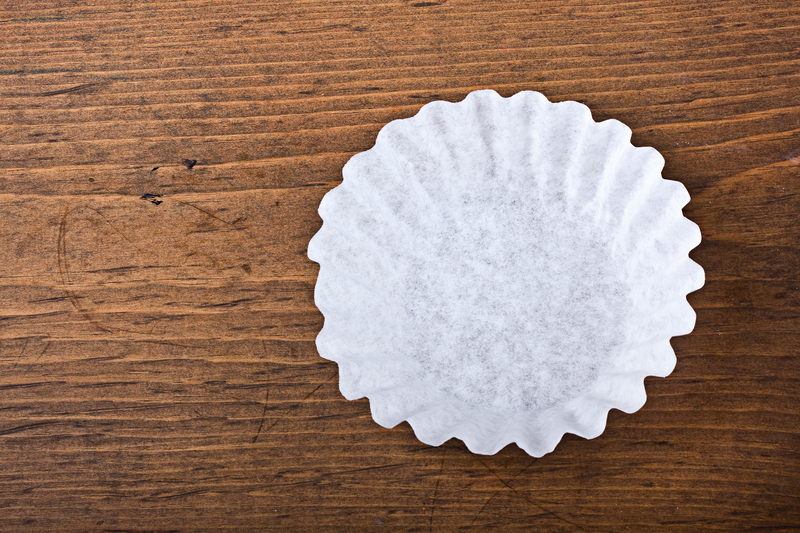Tenants Tackle End of Tenancy Cleaning: A Practical Guide
Posted on 08/06/2025
Tenants Tackle End of Tenancy Cleaning: A Practical Guide
Are you preparing to move out of your rented property? Worried about getting your deposit back? You're not alone! End of tenancy cleaning can feel overwhelming, but with an effective strategy, the process becomes manageable and rewarding. In this comprehensive guide, tenants will discover practical tips, a step-by-step cleaning checklist, and proven methods to ensure a sparkling property and a full deposit return.

Why Is End of Tenancy Cleaning Important?
End of tenancy cleaning, often a requirement in rental agreements, is essential for a number of compelling reasons, including:
- Securing Your Deposit: Landlords and letting agents commonly conduct detailed inspections. Dirt, stains, or damages can lead to deductions from your deposit. A thorough clean maximizes your chances of getting every penny back.
- Maintaining Good References: Leaving your property in pristine condition helps you secure positive references for future rentals.
- Meet Legal Obligations: Rental agreements often contain clauses specifying standards for cleanliness. Failure to comply can result in financial and legal issues.
Whether you're a seasoned tenant or it's your first time moving, understanding how to tackle end of tenancy cleaning efficiently is crucial. Let's break down how tenants can approach this task like a pro.
What Does End of Tenancy Cleaning Involve?
A full end of tenancy clean means deep cleaning the entire property so it's ready for the next occupant. Unlike your regular tidy-up, this process includes every nook and cranny -- from floors to ceilings and appliances to furniture.
- Deep Clean Bathrooms: Remove soap scum, disinfect surfaces, and ensure grouting and sealant are mold-free.
- Spotless Kitchen: Degrease ovens, clean out fridges, and sanitize countertops.
- Dust & Polish: Wipe down skirting boards, doors, and lighting fixtures.
- Floors: Vacuum, mop, and treat stains on carpets or rugs.
Remember: Pay attention to high-touch areas and overlooked spaces -- these are where landlords often find fault!
Step-By-Step: How Tenants Should Prepare for End of Tenancy Cleaning
1. Read Your Tenancy Agreement
Start by re-reading your rental agreement. Identify any specific cleaning obligations or expectations, such as professional carpet cleaning or window washing. This ensures you don't miss crucial details that could jeopardize your security deposit.
2. Gather Your Tools & Supplies
Good preparation makes all the difference when it comes to how tenants approach end of tenancy cleaning. Here's a basic cleaning kit:
- Multi-surface cleaners
- Disinfectant sprays
- Microfibre cloths
- Sponges & scrub brushes
- Vacuum cleaner
- Mop & bucket
- Carpet stain remover
- Rubber gloves
- Bin liners
Tip: If your property has specialist surfaces (e.g., granite, leather, hardwood), get appropriate products and follow manufacturer guidance.
3. Plan Your Cleaning Schedule
Allocate sufficient time (a few days, ideally) to deep clean the property, especially if it's large or heavily used. If possible, schedule your cleaning after your belongings have been moved out. This reduces obstacles and helps you spot hidden dirt or damage.
A Comprehensive End of Tenancy Cleaning Checklist for Tenants
Kitchen
- Oven: Remove racks, clean thoroughly inside and out, and scrub off grease or burnt food.
- Fridge/Freezer: Defrost, wipe interior and shelves, and clean exterior doors and seals.
- Microwave & Appliances: Disinfect inside and out, clean crumb trays and rotating plates.
- Worktops & Cupboards: Wipe down all counters, empty and clean cupboards inside and out.
- Sinks & Taps: Remove limescale, polish taps, and disinfect basins.
- Floors: Sweep, mop, and treat stains.
- Bins: Empty and disinfect all waste bins.
Bathrooms
- Toilets: Clean bowls, seats, and flush handles - don't forget behind toilets!
- Showers & Baths: Scrub tiles, screens, showerheads, and grout; remove mold and limescale.
- Mirrors: Polish with glass cleaner until streak-free.
- Sinks & Taps: Disinfect, remove toothpaste stains and polish chrome.
- Floors: Mop and disinfect.
Living Room & Bedrooms
- Carpets & Rugs: Vacuum thoroughly, treat any stains.
- Floors: Sweep, mop, or polish as appropriate.
- Furniture: Wipe down surfaces, legs, and underneath. Remove all crumbs and dust.
- Soft Furnishings: Vacuum sofas, cushions, and curtains.
- Skirting Boards & Doors: Dust and wipe clean.
- Light Switches & Sockets: Wipe with a damp cloth.
- Windows: Clean glass, sills, and frames (inside and out if required by your contract).
Hallways & Storage Areas
- Coat Hooks & Rails: Dust and wipe down.
- Bannisters & Railings: Remove finger marks and dust.
- Cupboards & Closets: Empty, clean, and air out interior spaces.
Key Areas Often Missed by Tenants During End of Tenancy Cleaning
- Behind appliances: Move and clean under/behind fridges, ovens, and washing machines.
- Extractor fans & filters: Degrease and clear dust buildup.
- Window sills, blinds, and curtain rails: Check for cobwebs and dust.
- Light fittings: Remove dust and dead insects.
- Beneath beds and sofas: Vacuum and check for forgotten items.
Tip: Create a detailed checklist and tick off tasks as you go for peace of mind and the best results.
DIY End of Tenancy Cleaning: Pros and Cons
- Pros:
- Cost saving: Doing it yourself is usually cheaper than hiring a professional cleaning company.
- Control & Customization: You decide exactly how each area is cleaned, and can focus on tricky spots.
- Immediate Feedback: You inspect as you go -- no waiting for cleaners to finish.
- Cons:
- Time-consuming: A full tenancy clean can take an entire day or more, depending on property condition.
- Effort required: Deep cleaning is physically demanding, especially if not used to it.
- Potential Overlooked Areas: Without professional experience, you may miss spots landlords prioritize during checks.
Should Tenants Hire Professional End of Tenancy Cleaners?
For busy tenants or those moving out of large or neglected properties, hiring professional end of tenancy cleaners can be a smart investment. Many cleaning companies offer guarantees -- meaning if agents or landlords are unhappy, they'll return and clean again for free. Always choose reputable, insured providers and ask for a detailed checklist and a receipt to present at check-out.
- Tip: Compare quotes and check online reviews.
- Confirm which areas are included: For example, some cleaners exclude carpets, ovens, or windows unless requested.
How to Pass the Landlord's Inspection
Document Everything
Take dated photographs once cleaning is complete. This protects you against unfair disputes over cleanliness and serves as evidence of your efforts.
Communicate Clearly
Let your letting agent or landlord know when the cleaning is finished and ask if they'd like to do an interim inspection before your move-out date. This provides a window for addressing any concerns without stress.
Use the Inventory Checklist
If an inventory was taken at the start of the tenancy, compare it to the current condition of the property. Ensure all items are cleaned and furniture is positioned as found.
Common End of Tenancy Cleaning Mistakes Tenants Make
- Leaving cleaning too late: Rushing increases the risk of missing key areas.
- Ignoring windows: Dirty windows are a common cause of failed inspections.
- Overlooking extractor fans, grouting, and limescale: These small details make a big difference.
- Not removing rubbish: All personal possessions and refuse must be gone by handover.
- Missing behind or under furniture: Dust and debris here are easily spotted by landlords.
Tenants' Frequently Asked Questions About End of Tenancy Cleaning
Do I need to hire professional cleaners to get my deposit back?
Not always. If you match the cleanliness of the property at move-in (as documented in your inventory), self-cleaning is usually sufficient -- unless your agreement specifies professional services.
What happens if I miss a spot?
Landlords may request a re-clean or make deductions from your deposit. Aim for thoroughness, especially in kitchens and bathrooms.
How long does end of tenancy cleaning take?
For a one-bed flat, allow 4-8 hours. Larger and/or heavily used properties may take a full day or longer.
Should I clean carpets and upholstery?
If your move-in report noted spotless carpets or soft furnishings, clean these thoroughly. Consider hiring a steam-cleaner or a local cleaning firm if necessary.
Can I leave some furniture behind?
Only if the tenancy agreement or landlord agree. All personal possessions must be removed, and furnished items should be returned to their original positions.
Top Tips for Hassle-Free End of Tenancy Cleaning
- Work from top to bottom: Clean ceilings and light fixtures first, then tackle floors last.
- Use the right products: Read labels to avoid damage to specialist surfaces.
- Take before-and-after photos: Essential for peace of mind and deposit disputes.
- Double-check problem areas: Sinks, ovens, fridges, and bathrooms need extra attention.
- Keep your receipts: Some agents require proof of professional work (e.g., carpet or oven cleaning).

Conclusion: Mastering End of Tenancy Cleaning as a Tenant
End of tenancy cleaning doesn't have to be stressful or costly. By following a structured approach -- planning ahead, using a detailed checklist, and focusing on often-overlooked areas -- tenants can tackle end of tenancy cleaning with confidence. Whether you go DIY or hire the pros, meticulous cleaning is the best way to ensure a smooth property handover and full return of your deposit.
Make your departure a positive experience by leaving your property spotless and setting a standard for future tenancies. A little extra effort pays off -- both financially and in your rental reputation!
Related Resources
- Tenant Cleaning Responsibilities (Citizens Advice)
- How to Get Your Deposit Back (Gov.UK)
- Check-Out Guide: A Tenant's Perspective
Get ready to make your move stress-free -- and deposit-friendly -- with this practical end of tenancy cleaning guide for tenants!




